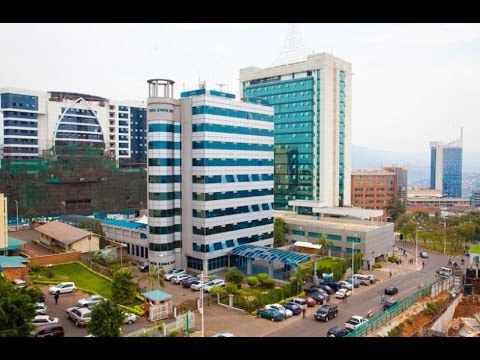Among the sectors that are already picking up are trade, manufacturing and the financial sector.
The Rwandan economy is showing signs of picking up in the second half of the year and towards recovery, the National Bank of Rwanda (BNR) has said.
The optimism is partly based on the Composite Index of Economic Activity, a measure used by the Central Bank to measure the direction of economic activity. The CIEA the regulator says shows increased activity in the local economy.
John Rwangombwa, the Governor of the Central Bank told The New Times that the resumption to work in a number of sectors as part of the reasons for confidence and optimism as it will drive up consumption as the public’s incomes grow.
Among the sectors that are already picking up are trade, manufacturing and the financial sector.
The increased consumption and disposable incomes as the workforce gets back to productivity is expected to grow in intensity on the remaining part of the year.
Banks continue to lend to the private sector with the trend expected to persist.
Following the quarterly Monetary Policy Committee (MPC) meeting, held on Wednesday, August 12, Central Bank has maintained the Key Repo Rate at 4.5 per cent to encourage continued lending by banks to the private sector and individuals.
The key repo rate is the maximum rate at which commercial banks invest their money at the central bank.
By leaving it relatively low, it leads banks to consider lending to the market which will consequently drive economic recovery. Increased supply and appetite to lend among banks could consequently lead to a reduction in rates.
So far, sectors leading in demand and uptake of credit according to the Central Bank are trading with manufacturing picking up pace.
“The fact that there are government efforts through the economic recovery fund to support different economic sectors is expected to have an impact as well,” Rwangombwa said.
Among the sectors that there is slight hesitance to lend to and credit is yet to pick up due to risk perception include the tourism industry, transport sector (due to logistics challenges and social distancing) and commercial real estate. The said sector have significant loans in local banks with some working out loan rescheduling and restructuring with their respective lenders.
However, Rwangombwa noted that with the government intervention in the sectors as well as pick up the economy, the said aspects are unlikely to be problematic.
“The government has come in to support the sectors to continue surviving and mitigate the impact they could have on banks. Banks have also restructured and rescheduled their loans. If things continue to normalize, it shouldn’t be a problem,” he said.
On whether the move by a number of banks to grant a grace period for clients with loans has affected liquidity levels, Rwangombwa said that local banks have adequate liquidity facilitated by their own initiatives, Central Bank interventions, the Economic Recovery Fund as well as government spending.
“The government has increased spending through projects that support economic recovery such as the construction of schools among others. These add liquidity to the banking sector. We do not see a problem with liquidity. The main problem we see is credit risk which we will continue working with banks to manage,” he added.
Local banks say that going forward, they expect to see forces of demand and supply to kick into effect to allow the resumption of economic activity to normalcy.
For instance, Hannington Namara, the Chief Executive of Equity Bank said that with the exception of a few sectors, demand for credit continues to be low as the activity is yet to resume fully.
He said that with some economic sectors only partially open and others not yet open such as schools and tourism there is still a void given their interconnection with other sectors.
He lauded the Central Bank’s move to keep low the repo rate saying that it is a right signal in terms of next steps to stimulate lending and consequent consumption.
Culled from Newtimes

